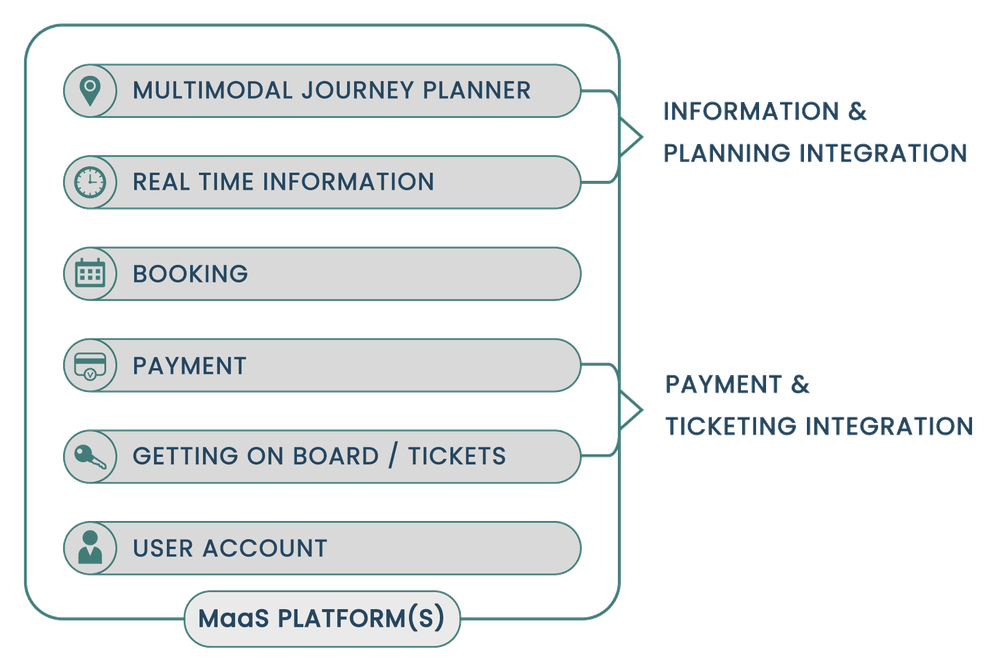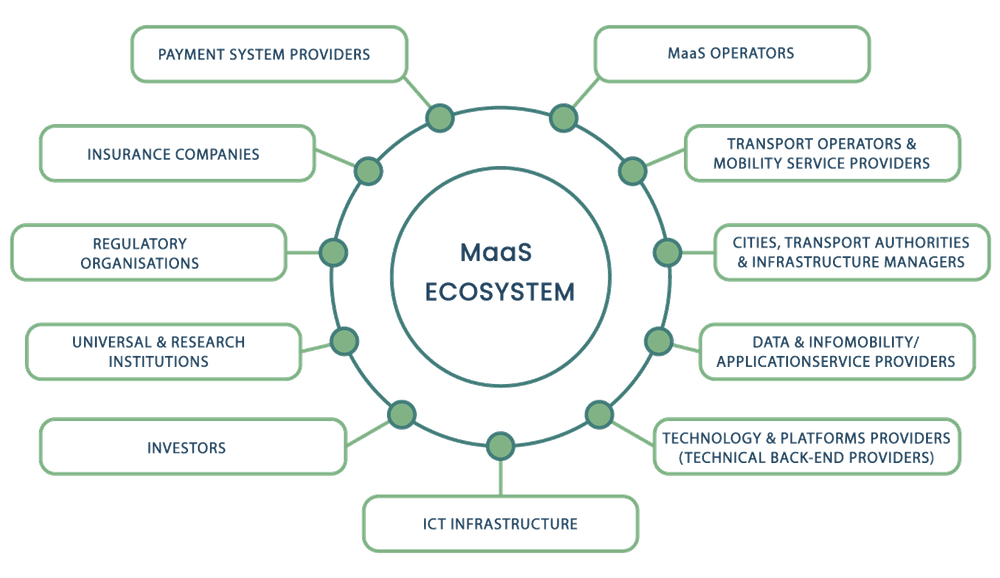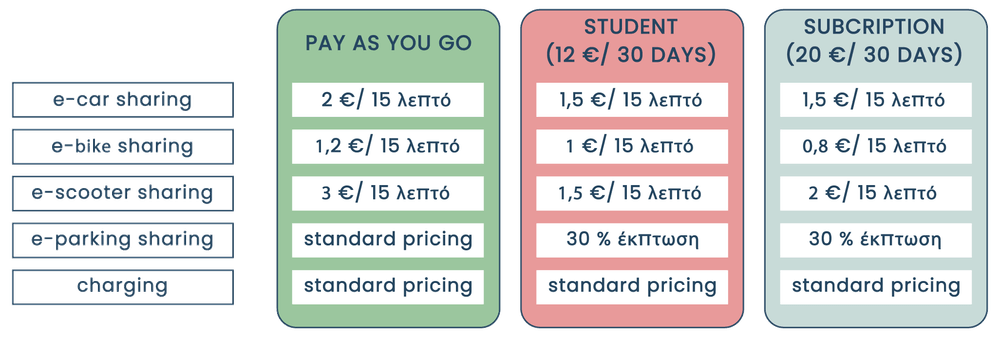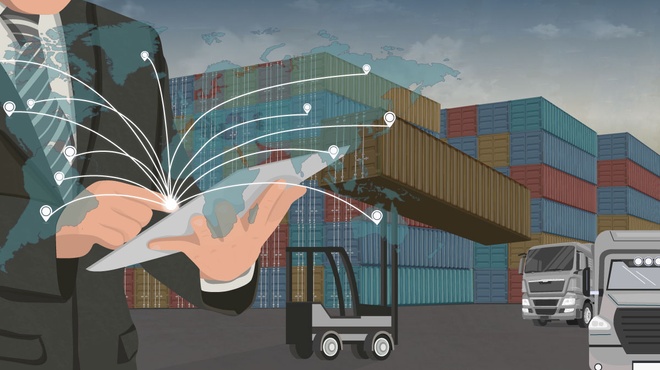MaaS has been a buzzword in the tech sphere for a while now. However, what does it really mean? Let’s get a handle on the topic together.
What is MaaS?
There is currently no widely accepted definition of Mobility as a Service (MaaS), despite the considerable interest in the transportation industry from both the public and private sectors.
MaaSLab of the University College London defines it as follows.
MaaS – a user-centric, intelligent mobility management and distribution system, in which an integrator brings together offerings of multiple mobility service providers, and provides end-users access to them through a digital interface, allowing them to seamlessly plan and pay for mobility.

The idea’s core is the integration of numerous services and the delivery of those services to users via a single means. The supplier and demand-side middlemen handle the integration and unified service provision.
Strictly speaking, MaaS is about integration and bringing together many mobility service providers into a single solution.
MaaS providers
Examples of providers are transport companies that offer services including on-demand services, carpooling, car sharing (Turo, Modo, Flinkster etc) public transportation, and many others.
There are also shared mobility services, including ridesharing (for example, Uber and Lyft), e-scooter sharing, and bike sharing, that play a significant role in MaaS.
Another element of MaaS is peer-to-peer rental services, including Turo and Getaround. These services let people hire out their own vehicles to other parties, offering a less expensive option to automobile rental services.
In cases where traditional public transportation is unable to adequately meet the user’s specific requirements, shared mobility and on-demand services can be used to complement traditional public transportation.
This may also solve the last-mile problem. The last mile problem lies in the fact that while customers want deliveries to be free and fast, the last mile also is the most expensive and time-consuming part of the supply chain.
Together, shared modes, public transportation, and any new mobility option complete a comprehensive transportation network that can work as an addition to or a substitute for private vehicles.
Although transport operators are mostly considered as the main suppliers, more businesses are entering the MaaS market.
The provision of entertainment services (Wi-Fi, movie, and game providers) and mobility-supportive services (fuel providers, parking or highway operators, mobile phone charging) that could improve users’ travel experiences also contributes to MaaS a lot.
MaaS platforms
The MaaS platform consists of a number of parts that work together to perform essential tasks like data import, data storage, trip planning, optimisation, ticketing, payment, and communication.
Users can utilize these features to plan multimodal journeys, reserve transportation resources, get on-route instructions and rebook recommendations in the event of a disruption, and pay for the journey in a single transaction.
Relevant information includes:
- the locations of public transportation stations;
- timetable and routing details;
- the actual locations of trains, buses, shared vehicles, and bikes;
- the availability and cost details of ride-hailing services;
- the corresponding reservation and payment methods for the various modes etc.

Several actors from both within and outside of the transport sector cooperate to offer MaaS. They all constitute the MaaS Ecosystem.

I’ve heard about eMaaS, too …
The first electromobility platform Mobility as a Service (eMaaS) was deployed in Greece and funded by the EU.
The project is still in progress, but has already shown a major breakthrough, which is added value to cities through a “neutral” data collection and analysis platform.
Moreover, eMaaS includes electric scooter-sharing, electric bike-sharing, electric car-sharing, parking services and charging in its profound application services.
It’s like having a single e-wallet, everything you need is gathered in one app.

This is how it looks:

Opportunities & Challenges
According to the Interreg Europe Programme, MaaS has a number of potential advantages for mobility, such as networks that are optimized for interoperability, better information delivery, and increased citizen efficiency.
MaaS can lessen the necessity of using or owning a car. It facilitates better decisions about which mode of transportation to use when a specific set of circumstances arises.
In fact, consumers are given the easy option to select the transport product or combination of transport products that best suits their needs for each journey.
MaaS can take into account a user’s overall preferences for travel-related factors like comfort, speed, and cost.
This is as well as needs particular to a given route, including the need to bring along heavy luggage or accessibility. This is crucial for people whose mobility is temporarily or permanently impaired.
Additionally, a complete picture of every mode of transportation will increase the transparency of the true cost of mobility. A well-balanced mix of modes may offer users cost-saving opportunities over the course of private auto ownership.
As an example, there is a MaaS project, Ubigo, introduced in Stockholm. According to an evaluation report, the majority of users are satisfied or very satisfied with UbiGo as a whole.
The participants most enjoy the fact that the services are gathered, that tickets are included and that the family’s trips can be concentrated to one account.
Challenging Aspects
Yet, there are still issues on how to combine commercial services (such as taxis, bike and scooter rentals, and car sharing programs) with public transportation.
Another concern is how to genuinely ensure sustainability.
Moreover, there are several challenges including economic barriers such as viability, end-user acceptance, revenue sharing, and how to ensure equal access for small companies.
Operational issues can include technological issues and administrative challenges, such as data control, security, and management of providers.
The first important technological requirement for MaaS implementation is the availability and provision of open and standardized Application Programming Interfaces (APIs) from the mobility service providers.
Analogue systems, like paper based ticketing for example, but also legacy digital systems that are unfit for direct integration may need to be replaced for MaaS deployment.
The MaaS market
According to the report, the global mobility as a service market is expected to grow from $154.29 billion to $181.74 billion in 2023 at a compound annual growth rate (CAGR) of 17.8%.
The mobility as a service market is expected to reach $351.73 billion in 2027 at a CAGR of 17.9%.
According to McKinsey’s 2020 ACES consumer study, more than 60% of consumers would split the cost of a shared-mobility journey with a stranger, if doing so would increase travel time by no more than 15% while lowering the cost.
It means that the increasing adoption of shared mobility will drive mobility as a service market.

What about Regions?
According to research, the MaaS industry is expected to experience a rapid increase in the Asia-Pacific region over the next several years. This is a result of the presence of multiple market players, an expanding population, an expanding labor force, and rising disposable income.
China, Japan, Singapore, South Korea, and India are particularly well-positioned for the spread of MaaS. Their governments proposed investments to improve urban transportation, traffic management, and smart transportation infrastructure.
Due to rising digitalization, the development of efficient ride reservation and monitoring technologies has further aided the growth of the global MaaS market.
With more Europeans turning to alternative forms of transportation and public transit, the market for mobility as a service in Europe is also anticipated to expand steadily over the next few years.
More residents are switching to MaaS solutions rather than navigating their own automobiles through traffic. Additionally, visitors to the area are using MaaS to plan their trips inside Europe, so they won’t have to rely on on-the-spot transportation and all of its problems.

Some Tendencies
- The growth in vehicles has made parking issues and traffic congestion worse in cities, which has sped up the development of regularized public transportation systems. During the course of the projection period, this is expected to support the growth of the global MaaS industry.
- The creation and introduction of several types of electric vehicles (electric buses, car sharing, and ride-hailing services), with assistance from numerous regional governments, has increased the variety of transportation options. Improvements in the infrastructure for charging electric vehicles also promote the rise of the market share for MaaS.
- The MaaS market is expanding as a result of easier access to commuter trains, passenger taxis, bikes, ride-sharing services, car and bike-sharing services, as well as other new wireless connections and technology.
- The market for mobility as a service has grown as internet connectivity has increased, particularly through high-speed 5G and 4G LTE connections and wireless communications with drivers via telecommunications using smartphones. Consumers are increasingly choosing to plan and carry out their travel using smart devices, from navigation and tickets to payment and insurance.
Conclusion
The MaaS market will only continue to grow, as we’ve mentioned in the article. Yet, MaaS definitely has plenty of benefits but also some challenges to overcome.
It’s important to keep up with the MaaS industry, especially for logistics and transportation businesses. Talk to our experts, if you’re willing to find out more.




